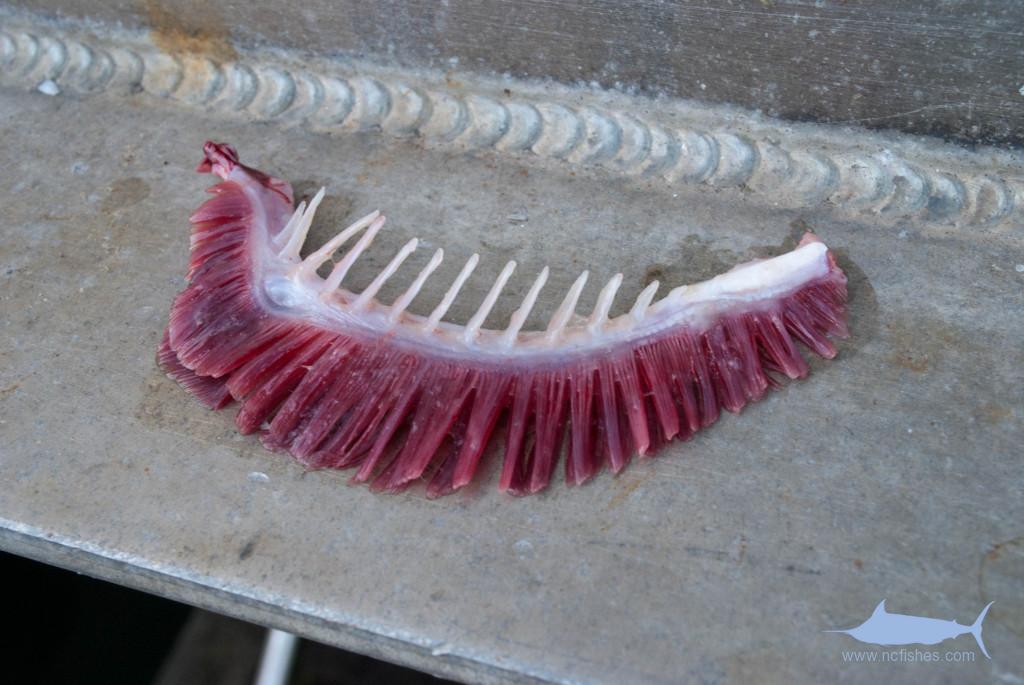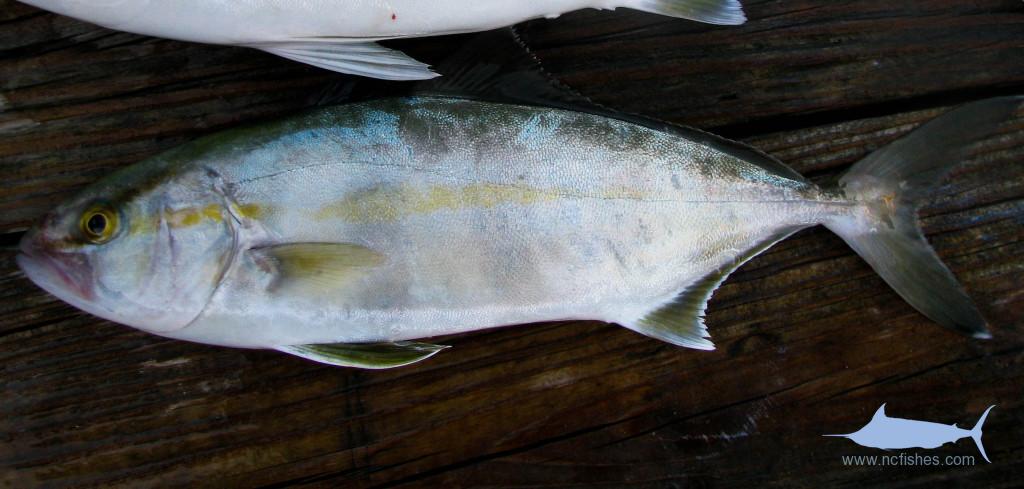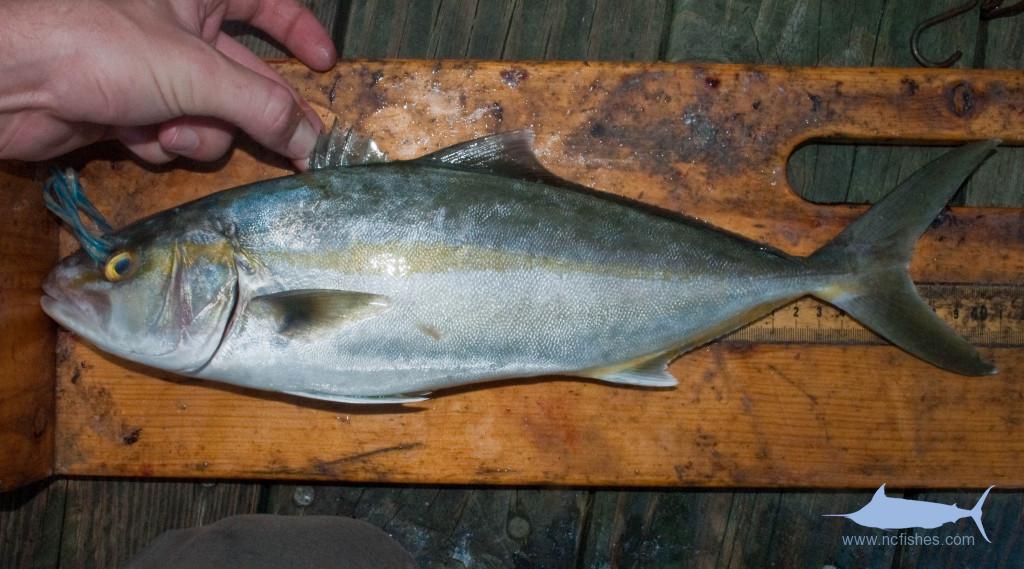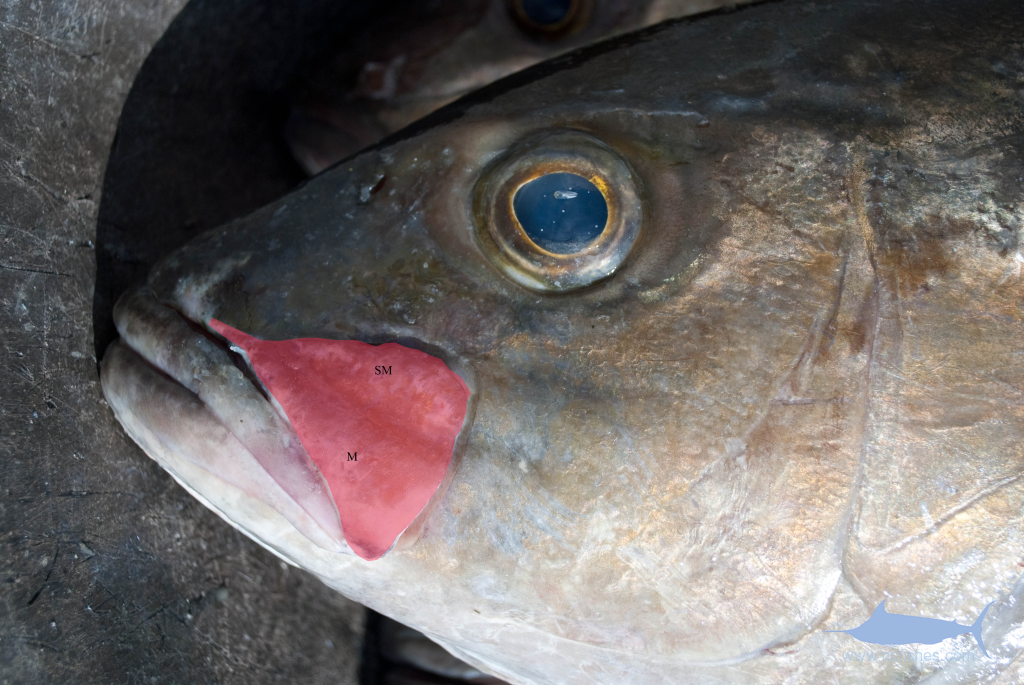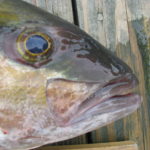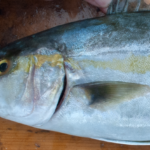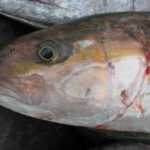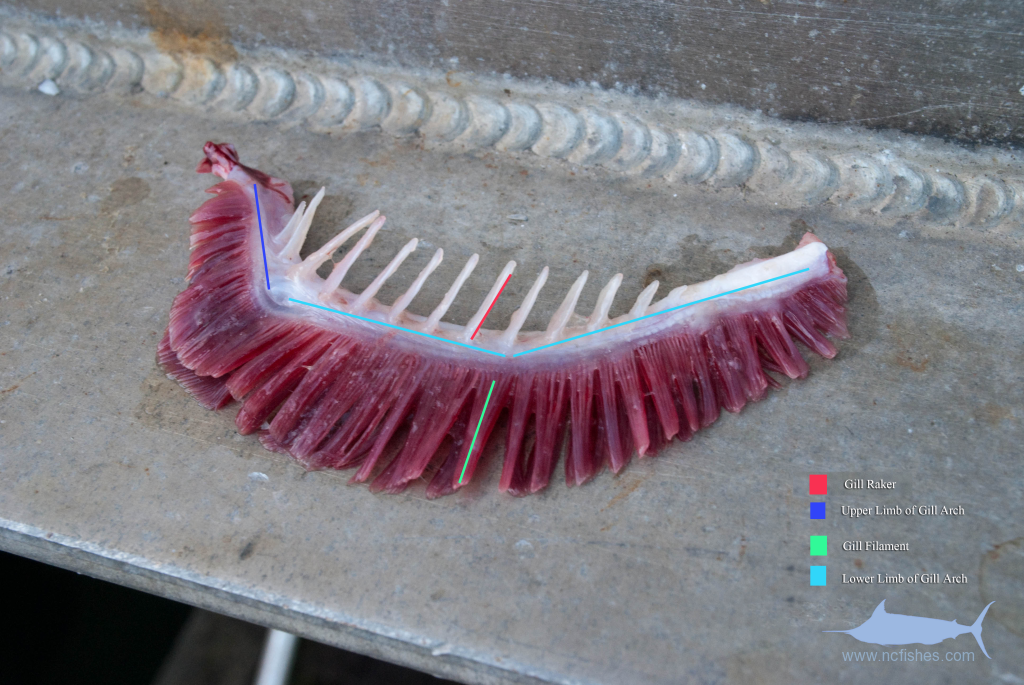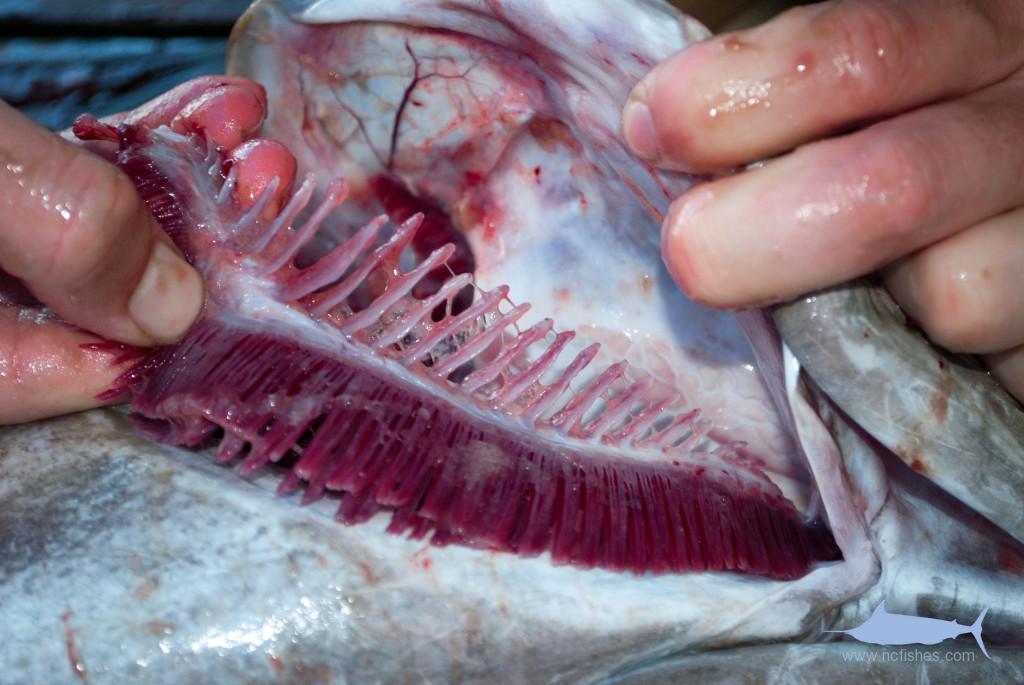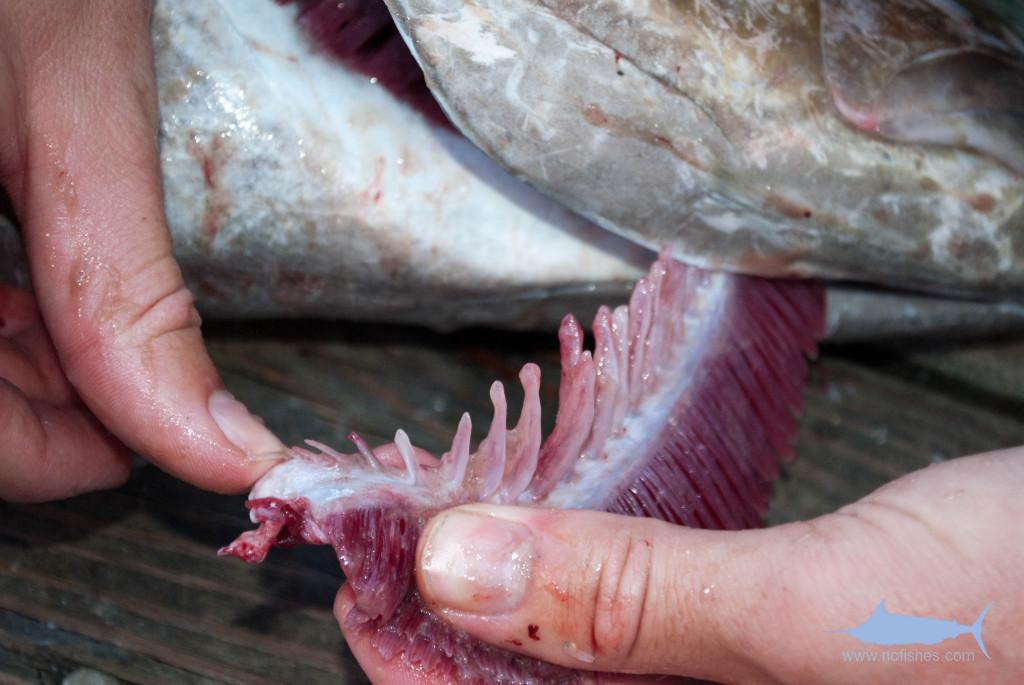Introduction
Today I wanted to touch on amberjack identification, specifically, how to properly ID them. Amberjack identification is not the easiest task in the fish world, but with a little practice you shouldn’t have any problems. This is a question we see on a regular basis, and one even experienced captains get wrong repeatedly. I was recently approached by some mates from a local charter boat who were asking how to correctly ID these fishes, and I found it difficult to explain without pictures, so this is my attempt. The fishes we will be referring to as “amberjacks” from here on out include: the Greater Amberjack, Seriola dumerili, the Almaco Jack, Seriola rivoliana, the Banded Rudderfish, Seriola zonata, and the Lesser Amberjack, Seriola fasciata. Although there are 9 fishes in the genus Seriola, these four fishes are the only resident amberjacks present along the eastern coast of the US.
Why does amberjack Identification matter?
Amberjack identification may not matter to you at all, however if you are a fisherman, many states have regulations that cover greater amberjack differently from almaco, lesser and banded rudderfish. You better hope you can tell them apart before you put one in your cooler!
The basics
With very few exceptions, most bony fishes respire though organs called gills, and most of these gills share the same general structure presented below.
Without going into too much detail, the red string-like structures in this image are known as filaments, and the white protrusions are known as gill rakers. The structure as a whole is known as a gill arch, and many gill arches together make up the gills. The number of rakers on the first gill arch is what we are going to use to ultimately help us identify the differences between the amberjacks.
Size
Before you have to start counting gill rakers, let’s cover the obvious external characteristics. First of all, large adult greater amberjack are easy to identify on their size alone. None of the other amberjacks reach as large of a size as the greaters. Although the almaco jack comes close, its body shape is completely different, and is easily differentiated.
| Common Name | Max reported Size | Common Size |
| Greater Amberjack | 190 cm (74.8 Inches) | 100 cm (39.4 Inches) |
| Almaco Jack | 160 cm (62.9 Inches) | 90 cm (35.4 Inches) |
| Banded Rudderfish | 75 cm (29.5 Inches) | 50 cm (19.6 Inches) |
| Lesser Amberjack | 67.5 cm (26.5 Inches) | 50 cm (19.6 Inches) |
Other Characteristics
Almaco jack can further be differentiated by their darker color and their second dorsal fin being much higher than the other amberjacks.
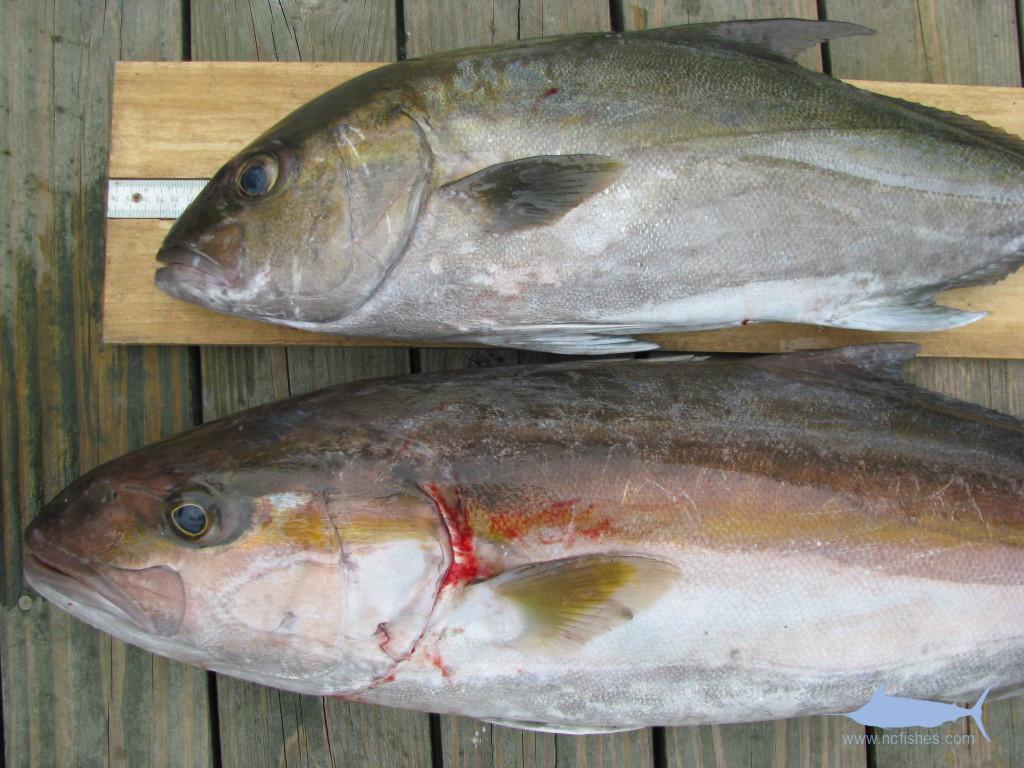
Juvenile almaco jacks do not look like other juvenile amberjacks or very much like adults:
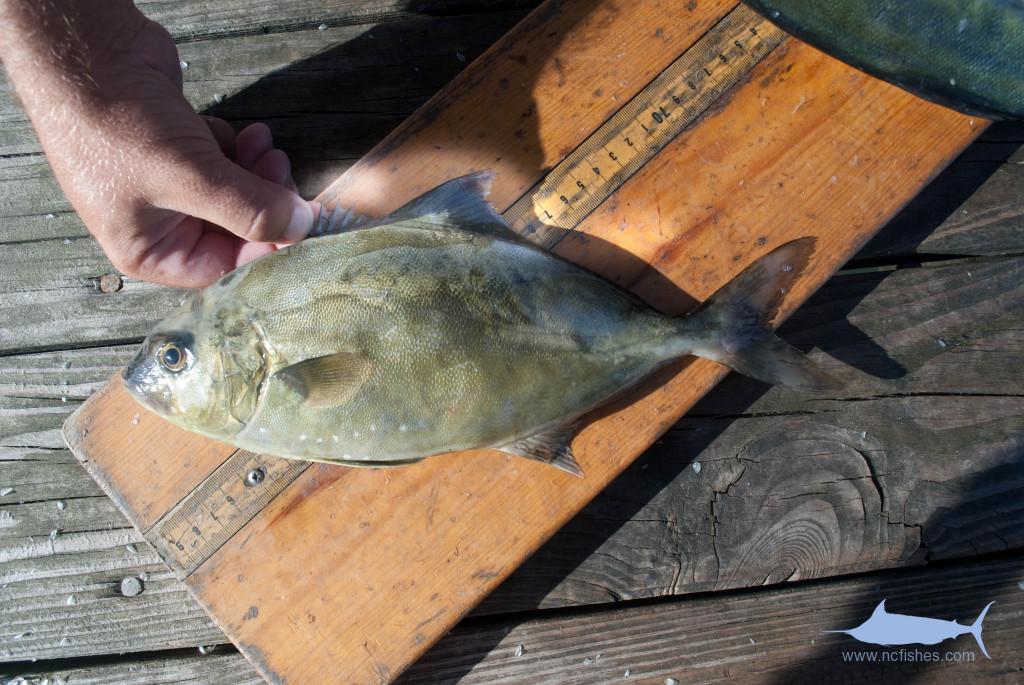
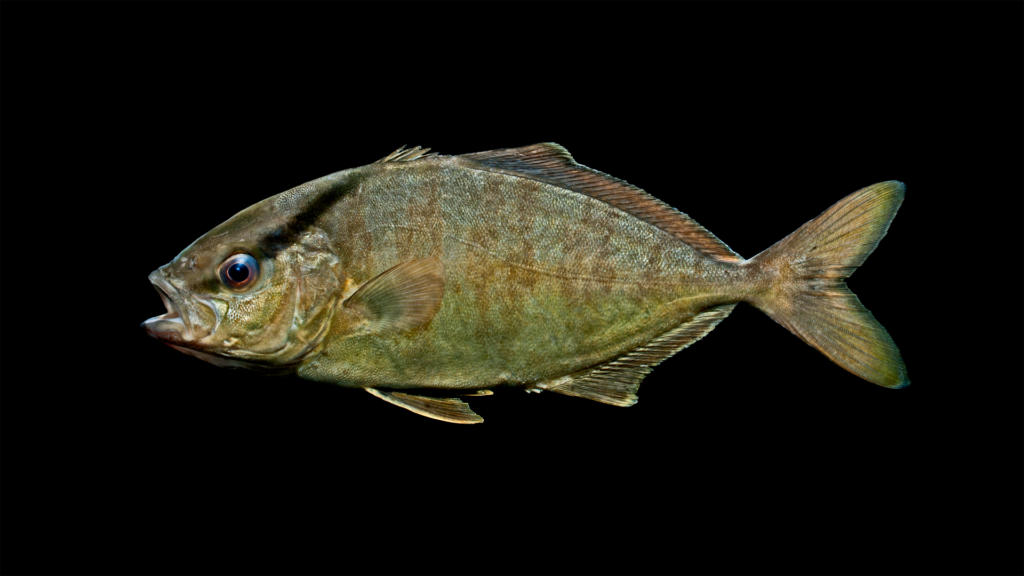
Banded rudderfish are slimmer, with a less deep body than other amberjacks.
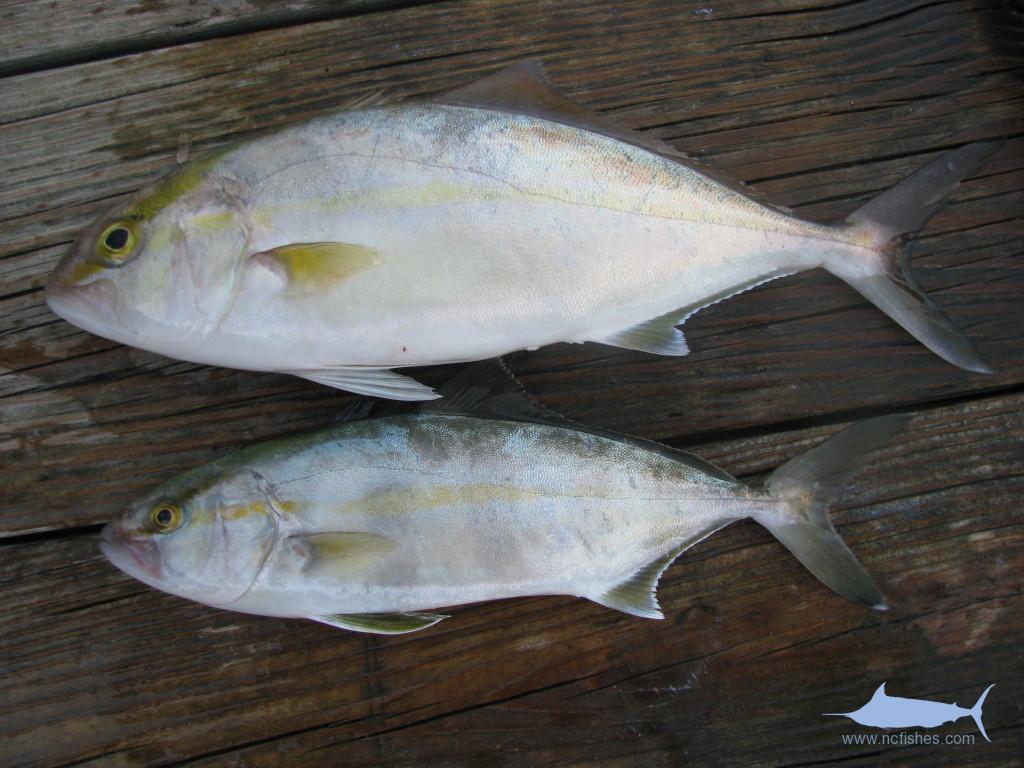
They are also much smaller, and tend to have a blue sheen in my experience. Up until about 14 inches, they also have either black bars, or the remnants thereof. Please note that pilot fish, Naucrates ductor is another jack that looks superficially similar to juvenile banded rudderfish. The easiest way to tell them apart is to look for the presence of 2 dorsal fins. Pilot fish have lost the first dorsal fin, although rudimentary spines may still be present.
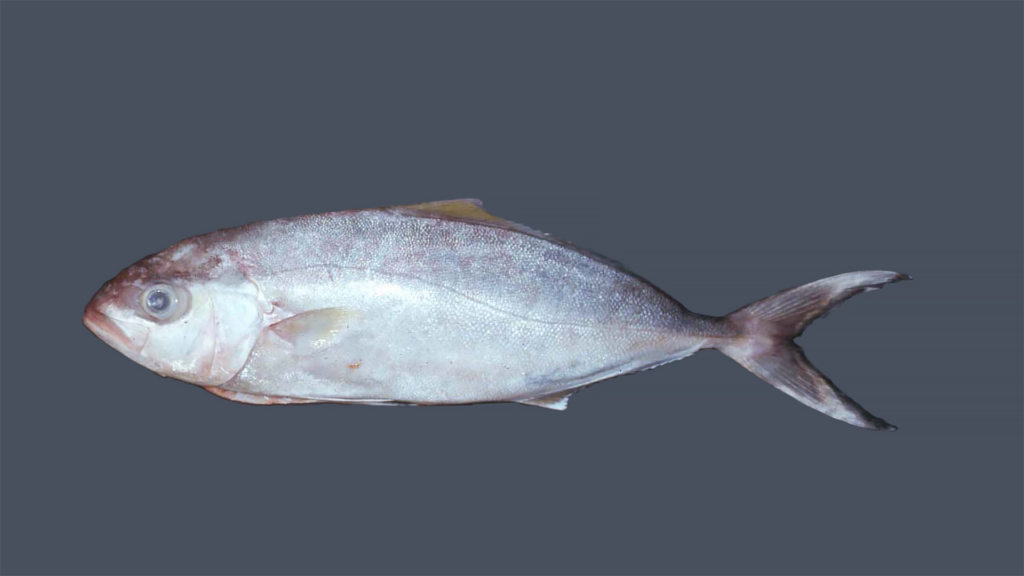
Maxilla Comparisons
Lastly, there are two bones on the jaw of the amberjacks, called the maxilla and supramaxilla, that are often cited during identification. For ease of reading, we will refer to both these bones combined as the maxilla, as they are not easily separated visually. The shape of this bone can be used as a method of preliminary identification, but shouldn’t be the only factor used. The greater amberjack’s maxilla is very rounded, with a “boot” protrusion on its dorsal surface. The banded rudderfish’s maxilla is pretty flat across the top, and drops with little curve in what is almost a 90 degree angle. The lesser amberjack’s maxilla does have a bit of curve to it, but no “boot” projection. The almaco’s maxilla is sort of a cross between the lesser and the rudderfish. I seem to be out of adjectives at the moment, but look at the pictures, they say it all.
It is also important to note the position of the maxilla with respect to the eye. Notice how in the greater amberjack, the maxilla reaches to at least the midline of the eye, while the rudderfish and the lesser do not. The almaco’s maxilla barely meets the front of the eye. Please note that this can vary, especially with younger fish, and should not be the sole factor in determining the species.
It is also important to note the line running through the eye of the fish, towards its first dorsal fin. Known as the “nuchal bar”, when present, it will flow from the eye to well in front of the first dorsal fin in lesser amberjack, and from the eye to the first dorsal fin origin in greater amberjack, almaco jack, and banded rudderfish. This bar can fade with age.
Gill Raker Counts
When external morphologies fail to ID the fish, we must resort to counting gill rakers on the first gill arch. You can do this by simply lifting the operculum (“gill flap”), and start counting all the rakers on both the upper and lower limbs of the first gill arch.
Once you have counted a few times, and are sure of your count, you can consult this table to help Id your fish:
| Common Name | Fish Length | Gill Raker Count | Fish Length | Gill Raker Count |
| Greater Amberjack | < 20 cm FL | 18-24 | >20 cm FL | 11-19 |
| Lesser Amberjack | < 10 cm FL | 23-26 | >20 cm FL | 23-26 |
| Almaco Jack | < 10 cm FL | 24-29 | >20 cm FL | 18-25 |
| Banded Rudderfish | < 10 cm FL | 20-25 | >20 cm FL | 12-17 |
The number of gill rakers in the greater, almaco, and banded rudderfish slowly decrease in number between 10 cm and 20 cm. Note that 20 cm is 7.87 inches. The gill rakers in the lesser amberjack remain constant.
As you can see, the greater amberjack, and the banded rudderfish counts can potentially overlap, as can the lesser and the almaco jack. This is where you will start comparing the other characteristics, in conjunction with the raker counts, to make a positive ID. The hardest fishes to differentiate are the greater and lesser amberjacks, and this chart of raker counts will simplify that for you.
It may help to just check if the rakers extend all the way to the point where the gill arch connects to the fish. In greaters and banded, there will be a space between the last gill raker, and the point of connection, where in the remaining two, the rakers will continue along the arch up until the connection point.
My methodologies
When I come across one of these fishes, the first thing I do is to check if it is larger than 20 cm. Then I check to see if it is an almaco jack. Remember to look for the high second dorsal fin, the size of the fish, the darker olive coloration, and the maxilla without a boot. If it doesn’t meet any of those prerequisites, then I move on and try to eliminate a banded rudderfish as a possibility. What does the maxilla look like, what is the size of the fish, is there a nuchal bar present, is there a blue sheen? Usually you can knock out both banded rudderfish and almaco jacks without ever lifting the operculum. At this point, you have narrowed it down to either a lesser or a greater amberjack, and it’s time to check the gill rakers. If the raker count is 11 – 19 then the fish is a greater amberjack, if it is 23 – 26, then it’s a lesser. On a side note, the lesser amberjack is a much less common fish, and I have only ever seen a handful.
So there you have it, amberjacks demystified. If you have any issues with your amberjacks, or any other fish for that matter, don’t hesitate to post a question or send an email under the contact us page.
Further Reading:
SOURCES:
Banded Rudderfish
Robins, C.R. and G.C. Ray, 1986. A field guide to Atlantic coast fishes of North America. Houghton Mifflin Company, Boston, U.S.A. 354 p.
Almaco Jack
Myers, R.F., 1991. Micronesian reef fishes. Second Ed. Coral Graphics, Barrigada, Guam. 298 p.
Lesser Amberjack
Smith-Vaniz, W.F., J.-C. Quéro and M. Desoutter, 1990. Carangidae. p. 729-755. In J.C. Quero, J.C. Hureau, C. Karrer, A. Post and L. Saldanha (eds.) Check-list of the fishes of the eastern tropical Atlantic (CLOFETA). JNICT, Lisbon; SEI, Paris; and UNESCO, Paris. Vol. 2.
Greater Amberjack
Paxton, J.R., D.F. Hoese, G.R. Allen and J.E. Hanley, 1989. Pisces. Petromyzontidae to Carangidae. Zoological Catalogue of Australia, Vol. 7. Australian Government Publishing Service, Canberra, 665 p.
FAO. 2002. THE LIVING MARINE RESOURCES OF THE WESTERN CENTRAL ATLANTIC.
Volume 3, Pages 1434-1435. 8 July 2014.
